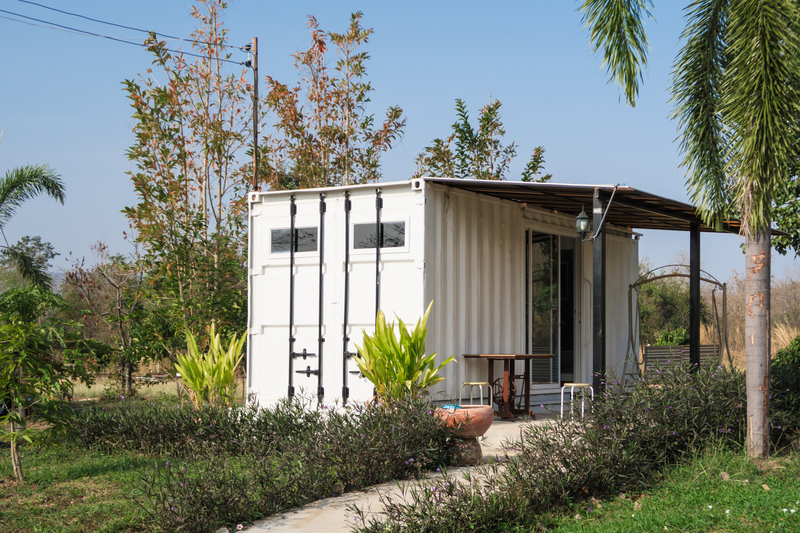Reduce Kitchen Clutter by Recycling Your Unused Pots and Pans
Do you ever open your kitchen cabinets only to be met by an avalanche of old cookware you rarely use? Many households face the same problem--kitchen clutter caused by the accumulation of unused pots and pans. These items not only take up valuable space but can also make your kitchen feel disorganized and chaotic. Fortunately, there's a sustainable and practical solution: recycling your unwanted cookware. In this comprehensive guide, you'll discover how to cut down on clutter, the environmental benefits of recycling, practical tips, and a step-by-step process for responsibly disposing of your old pots and pans.

Why Declutter Your Kitchen?
Keeping a tidy kitchen isn't just about aesthetics. A clutter-free kitchen promotes better organization, easier meal preparation, and even increased safety. Here are some reasons why it's smart to get rid of pots and pans you no longer use:
- Maximize Space: Free up valuable cabinet and drawer space for the items you use most.
- Enhance Efficiency: Quickly find the cookware you need, eliminating stressful searches and wasted time.
- Safety First: Prevent accidents caused by over-stuffed shelves or heavy pots falling out.
- Improve Hygiene: Old, unused cookware can collect dust, grime, and even pests, leading to an unhygienic kitchen environment.
- Support Sustainability: Recycling and reusing kitchen items keeps them out of landfills and helps the planet.
Understanding the Impact of Unused Cookware
Every year, millions of pounds of old metals--including pots, pans, and other cookware--end up in landfills. These items can take decades or even centuries to decompose, contributing to environmental problems. By choosing to recycle your unused kitchenware, you're not just simplifying your home--you're making a difference for the earth.
The Environmental Benefits of Recycling Cookware
- Conserves Natural Resources: Recycling metal reduces the need for raw materials, helping to preserve natural landscapes and habitats.
- Reduces Energy Consumption: Manufacturing new cookware from virgin material consumes more energy than recycling old metal products.
- Low Impact Disposal: Avoid adding to the waste problem--recycled cookware often gets a second life as new products.
- Minimizes Carbon Footprint: Recycling metal emits fewer greenhouse gases than mining and processing new metal ore.
How to Recycle Your Pots and Pans
Many people aren't sure what to do with unwanted cookware. You may not be able to simply toss them in your curbside recycling bin. Here's how you can responsibly part with your old kitchen items while helping the environment:
1. Identify What Can Be Recycled
Cookware is made from a variety of materials--aluminum, stainless steel, cast iron, copper, non-stick coatings, and more. Most metal-based pots and pans can be recycled, but non-stick coatings like Teflon can complicate the process.
- Aluminum, cast iron, and stainless steel: Often accepted at metal scrap yards or recycling centers.
- Copper cookware: Sought after by many scrap dealers because of copper's value.
- Non-stick or ceramic-coated pans: Check with your local recycling facility--some may not accept these items due to the coating.
2. Prepare Your Cookware for Recycling
- Clean: Remove any food residue or grease. A good wash ensures that your cookware is accepted and doesn't contaminate recycling batches.
- Disassemble: If your pots and pans have plastic handles, glass lids, or other non-metal parts, remove them. Only pure metal can go into metal recycling.
- Separate by Material: If you have a variety of metals, consider sorting your items, as some centers may require this step.
3. Locate Your Nearest Recycling Center
Not all recycling centers accept all types of metal cookware. Use online directories like Earth911 or contact your local municipal waste authority to find out where and how you can recycle your specific items. Some specialized scrap metal recyclers may even pay for old metal pots and pans.
4. Consider Donation or Upcycling
If your pots and pans are still usable but no longer needed, consider these alternatives:
- Donate to Charity: Homeless shelters, soup kitchens, or secondhand stores often seek donated kitchenware in good condition.
- Offer to Friends or Family: Someone new to cooking or moving into a first home may appreciate your extra cookware.
- Upcycle: Get creative! Old pots and pans make great planters, storage bins, or art projects. Search online for upcycling ideas that fit your style.
Tips for Preventing Future Kitchen Clutter
Once you've streamlined your cookware collection, it's important to avoid falling back into old habits. Here are some strategies to keep your kitchen organized:
- Adopt a One-In, One-Out Rule: When you buy a new pot or pan, commit to recycling or donating an old one.
- Choose Multi-Purpose Cookware: Invest in high-quality pieces that serve several functions, reducing the need for single-use items.
- Regularly Assess Your Tools: Once or twice a year, audit your kitchen drawers and cabinets to identify items you no longer use.
- Store Strategically: Use racks, shelves, and organizers to keep pots and pans accessible and visible, preventing unnecessary duplicates.
The Best Way to Sort Through Your Cookware
Not sure how to decide what stays and what goes? Here's a simple method for sorting through your pots and pans:
- Gather all your pots and pans in one area, like your kitchen table or countertop.
- Group by size and type -- saucepans, skillets, stockpots, specialty items, etc.
- Test each item for usability. Is the non-stick surface peeling? Are there deep scratches or rust? Has it been used in the past year?
- Be honest: If you haven't used an item in a year or more and it isn't sentimental, it's time to let it go.
- Decide on the best disposal route: recycle, donate, upcycle, or in rare cases, dispose of if unusable and unrecyclable.
Where Can You Donate Unused Cookware?
Donating is a wonderful way to give your old pots and pans a second life. Here's where you can send them:
- Charity thrift stores: Organizations like Goodwill, Salvation Army, and local thrift shops often accept kitchenware in good condition.
- Shelter kitchens: Homeless and women's shelters frequently need functional cookware for communal meals.
- Community centers: Cooking classes and after-school programs may welcome used cookware donations.
- Online classifieds: Platforms like Freecycle, Facebook Marketplace, or Craigslist make it easy to find someone in need.
What About Damaged or Heavily Used Pots and Pans?
If your pans are damaged, have loose handles, or the coating is peeling, most donation centers will not accept them. These are best recycled as scrap metal if possible.
- Remove all non-metal parts before taking them to a scrap yard.
- Check if your local recycling program accepts these items.
Creative Upcycling Ideas for Old Cookware
Before tossing your old pots and pans, consider giving them a new life around the house or garden:
- Planters: Drill a few drainage holes and use as quirky flower pots.
- Wall art: Vintage pans, especially copper or cast iron, look stunning as wall decor.
- Storage bins: Deep pots work perfectly for holding utensils, paintbrushes, or kids' art supplies.
- Bird baths or feeders: A shallow pan can make a creative spot for birds in your garden.
The Right Way to Dispose of Non-Recyclable Cookware
Some items, especially those with synthetic coatings or combined materials, aren't accepted at many recycling centers. Here's what you can do:
- Contact the manufacturer: Some brands have take-back or recycling programs.
- Check local hazardous waste facilities: For pans with special coatings or chemicals.
- Avoid landfill when possible: Exhaust recycling and donation options before considering trash disposal.

Frequently Asked Questions About Recycling Pots and Pans
Can I put pots and pans in my curbside recycling?
Usually, no. Most municipal recycling programs do not accept cookware with non-metallic components or coatings. Take metal pans to a dedicated recycling facility or scrap yard.
Do I need to remove plastic handles or glass lids?
Yes. Remove all non-metal components before recycling. Handles, knobs, and glass lids should be disposed of separately.
Are rusty pans recyclable?
Yes--rusty or damaged metal pans are accepted at most scrap metal facilities.
Where can I find a local center that recycles cookware?
Use resources like Earth911.com, RecycleNow, or your city's waste authority website to locate a nearby recycling site.
Conclusion: Make Decluttering a Sustainable Habit
Reclaiming your kitchen space leads to a tidier, more functional cooking environment, and proper recycling practices help protect our planet. By following these simple steps, you can turn unused or unwanted pots and pans into a force for good--reducing kitchen clutter, cutting down on waste, and even brightening someone else's home.
Ready to take action? Gather your old pots and pans today and commit to responsible recycling or donation. Not only will your kitchen thank you, but so will the earth!
Reduce kitchen clutter by recycling cookware--and make your kitchen a space of inspiration, not aggravation!